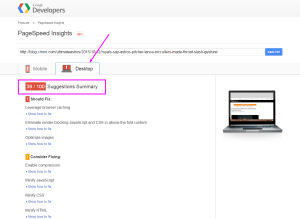 A Dragon Age Review with Bugs Attached
A Dragon Age Review with Bugs Attached
Been playing this popular game on PS4 recently and man, am I disappointed. I really want to love it, but instead I just think about how Bioware shipped this thing about six months before it was finished, with some bad design decisions baked in. I’m also a bit irate to see how badly they’ve evolved in the storytelling process while Bethseda has leapfrogged them handily with titles like Skyrim and Fallout.
It looks and sounds lovely and there’s clearly a heapton of backstory and thought. The characters are interesting and well-acted, when you can figure out what they’re saying*. You can see that, as Ray Muzyka said in a Wired interview, they “aggressively checked out” Skyrim and tried to borrow some concepts. Some of them have good conflicts with each other while all pursuing common goals in their own ways. All of this merely adds to the disgust and tragedy of this buggy, burdened, burdensome game: I think of all those game developers who poured their hearts into this damned box and all they (and we) got for their inspired labor was a shining turd.
What’s Broken in Dragon Age: Inquisition
The key bugs that annoy me in DA:I are clear A-class bugs in combat, especially in the time-stopping Tactical View, which is a necessity in tough fights, when the AI’s decisions can quickly decimate your party (and frankly, there’s really no AI that can handle a tough fight as well as a person can). What kind of bugs? Party members going completely AFK. I give them an order, and they just stand there. Forever. I have to pop out of Tactical View into real-time and jump with that character to wake them up. Why? Who knows. It might be a terrain issue; I have seen party members fall through gaps and occasionally stick on terrain until their deaths.
Oh, did I mention that the Tactical View camera traverses the terrain like a person? So when you want to attack an enemy from up on a rock ridge, you have to guide the damned thing down a walkable path to target the enemy. And then back up again anytime you want to check your guys or adjust them. And Maker help you if you’re fighting in a narrow gully with trees roofing it. The camera will hop around like a bullfrog on crack as you move it, and positioning a spell effect area precisely is hopeless when you can’t get high enough or low enough due to ceilings and obstacles. Bioware, here’s a hint: Please don’t do detailed collision detection with the damned camera. Make stuff translucent when the camera goes through it. It can be done. It has been done. Please.
Or I hit the button to switch characters and nothing happens. I can only control one character until I finish the fight or get to a menu somehow. I tell someone to stay out of danger, and they inexplicably start wandering. (Yes, I am double-tapping on the target location to see the little shield icon for HOLD POSITION.) Rubberbanding foes that teleport across the area in Tactical View (no, they weren’t being yanked by heroes’ grapples). And yeah, it’d be nice if the AI didn’t cast fire spells on the fire demons… sigh. The latter is a rarity in RPGs, I know, but one that wouldn’t be all that hard to code.
The menu system is a mess too. Inventory’s complicated if powerful. But you can’t equip items in the shop interface, which means you have to hop in and out of menus to buy an upgrade (buy new item, switch to inventory, unequip old item, equip new item, switch, sell old item). Nor can you discard item crafting patterns (“schematics”) for useless low-level items; instead you have to scroll through an ever-growing list of junky schematics, comparing their numbers, to find the good stuff. Feels like work.
And when you’re crafting items, you can’t compare the proposed item’s attributes with what you’re currently using. I actually wrote a bunch of numbers down on paper to figure out whether crafting was a good use of my resources. Uhhhh… really? Feels like work.
The final insult: you also can’t switch a character between melee and ranged weapons during a fight. I certainly understand penalizing a character with a delay as they swap weapons, or keeping someone from swapping between a dozen weapons like Duke Nukem, but utter inability to switch between a bow and a sword? Unheard of. This from the company whose heritage extends back to the original tactical party RPG, Baldur’s Gate. Just freaking shameful.
So Many Unique Lootz That You Hate Lootz; So Many Quests That You…
The game also manages to make loot uninteresting. There are so many unique items that you never know when you’ve found something cool. Instead, everything’s different and 99% of it is junk. (Granted, the latter’s true of any real RPG.) As a result, you don’t care about anything you pick up.
In Skyrim, you run across dozens of iron swords. When you get another iron sword, you immediately know it’s junk. But when you see an mithril sword of cleaving, that name gives you an obvious tip-off that it’s your lucky day. Also, it glows because it’s magic and you light up like Christmas.
But no, in DA:I, everything’s got a different name and you can’t see it physically unless you take the special effort to pop through a few menus and equip it to view it inventory. All you see is a loot item that, when opened, shows a list of the items within. Rarity is indicated by color (blue and purple being rarest), but there are useless purple items and good common items. And crafted items are generally the best of all, which means new item designs (“schematics”) can be valuable, but you’ll have to drag your butt to a crafting station to figure it out.
So it all sits in your bag until you have a chance to sort through it. Kind of like your bank statements. Congratulations, Bioware. You’ve managed to nerf one of the primary joys of RPGs.
I think they went the opposite (and wrong) direction of Fallout 4 on loot in this game, a grave error. In Fallout 4, you don’t even have to press a button to see what’s inside a container — you just look at it and the text appears showing contents. This avoids the annoyance of opening empty chests when you’ve doubled back on your path. Bethseda’s gotten rid of the opening action entirely.
There’s a minor innovation in the form of a war room where you can commit points to unlock abilities (like larger inventories) and new map areas. You can also send your war council on errands to solve problems and expand your influence, giving a nice impression of a larger international conflict (and challenges of leadership) that compliments your individual adventuring. Too bad the UI is tedious to navigate and the tasks apparently can be completed in almost any order, with few conflicting tasks and no time-dependent tasks. The UI is a lot like scrubbing a scene in a pixel-hunting adventure game; it’s littered with icons that are irrelevant, and positioning the cursor is onerous. Feels like work. A little snap-to-POI algorithm would go a long way here.
And of course there are meaningless quests galore. Find the pisspot you lost in the Sewers of Despair? Sure, I’ll do that in hopes of getting 5 gold and another item that looks like all the other junk in my bag. Heck, maybe it’ll be a multi-part quest. Love those.
Other Gamer Grousing
In addition, the multiplayer mode is dumbed down and unstrategic. No Tactical View, and the one time I tried it, my friend and I were killed repeatedly in the first scenario such that it felt hopeless.
*And as mentioned earlier, the dialog is oddly oblique and obtuse. All of the heroes are apparently politicians. No one says, “I hate demons and I want to see them all dead.” Instead they say something like “Demons are offensive to the Maker. When I am inclined to consider action, I find my aims aligned with the Maker.” Uhhh, right. As a purported wordsmith, I admire the artistry here, people, but this all feels like work.
I will give unadulterated praise to one feature of the game, though. There is a throne that you can sit in to decide what happens to various prisoners and defeated NPCs. The options are thought-provoking and I appreciated the effort to create a “heavy is the head that wears the crown” effect, presenting the player with moral decisions.
Having a horse on call to speed through maps is good. (Also in Skyrim.) I did genuinely enjoy the tavern songs by Raney Shockne, which were pleasant and also distinctive. I’d have to say this is one thing that Inquisition did better than Skyrim.
And the skill trees and the skills themselves are quite cool and generally make a clear difference in combat. Also in Skyrim, and probably the one thing that kept me going as far as I did. In retrospect, maybe I should’ve just played Skyrim.
Storytelling is Not an Afterthought, People
Especially in a text-heavy RPG. And text-heavy is one of the problems: Bioware continues to think that quantity is a substitute for quality. Just like older Bioware games such as Planescape: Torment, the landscape is littered with characters who want to tell you their life story, but the core experience is buried under all that excess… especially when most of them speak in that same constipated manner I mentioned earlier.
Maybe the name Inquisition itself should’ve been a warning. Any game that chooses a title so closely tied to an oppressive, murderous, and inhuman movement as the Spanish Inquisition is going to be a little tone-deaf.
I don’t want to know why the gardener is sending me on this FedEx quest to take his stupid broken trowel across the treacherous swamp; I want solve the mystery of my hero’s talent and beat the big boss. And when I don’t get tapped into that big conflict in a regular and meaningful way, I feel like the game is simply throwing chores at me while I grind my character toward advancement. I could be playing a game. In my leisure hours, why should I bother with all this work?
I’m sure an apologist would mention the rifts you have to close across every new map. Each rift is a reminder of the main quest and your special ability, and they do spawn new and tougher creatures as you progress. (Sometimes well beyond your ability, and much tougher than anything else in the map, with no indicator of difficulty.) But there’s a real lack of panache in the presentation. For example, I ran into a new beastie at one rift – a Pride Demon about forty feet tall and tough as nails. But no one in town was talking about him, and none of my party reacted to this obvious challenge. Opportunity missed.
A Modest Proposal for Books in RPGs
Actually, both Skyrim and Dragon Age fail with the many books you encounter in their worlds. These are amazing opportunities to enrich and entertain the player, but instead the developers are treating them like easter eggs, fodder for the completists. FAIL. How come these books almost never have anything related to the current quest that you’re on? How come they rarely mention anything useful or funny about characters you have encountered? Weapons or spells you’re using? Journals of people who are facing the same decisions as you are? How come we never start a quest or finish a quest by reading a book? How’s that for a way of telling the player that these things are just window dressing?
Here’s my simple proposition: make these damned things fun. I don’t want to read 14 volumes about ancient lore, in random order. I want to see the same number of books around, but 75% of them are dull-colored so only the completists will read them. Or maybe they’re even empty: when you pick them up the game says “You’ve read this one before in school” or “Yet another advice book on how think positively about the bubonic plague.” However, the brightly-colored books are always funny or relevant to your immediate situation. Make it so, people!
 I got an interesting question recently on Quora and thought it might be useful to repost the Q&A here:
I got an interesting question recently on Quora and thought it might be useful to repost the Q&A here: A Dragon Age Review with Bugs Attached
A Dragon Age Review with Bugs Attached





 The new Star Wars Battlefront beta is out and we’ve got some unsolicited impressions.
The new Star Wars Battlefront beta is out and we’ve got some unsolicited impressions. If you missed the Austin City Limits Music Festival (like I did) or are just looking to relive some of the moments in video, check out the
If you missed the Austin City Limits Music Festival (like I did) or are just looking to relive some of the moments in video, check out the 






 How Not to Handle Password Security
How Not to Handle Password Security

